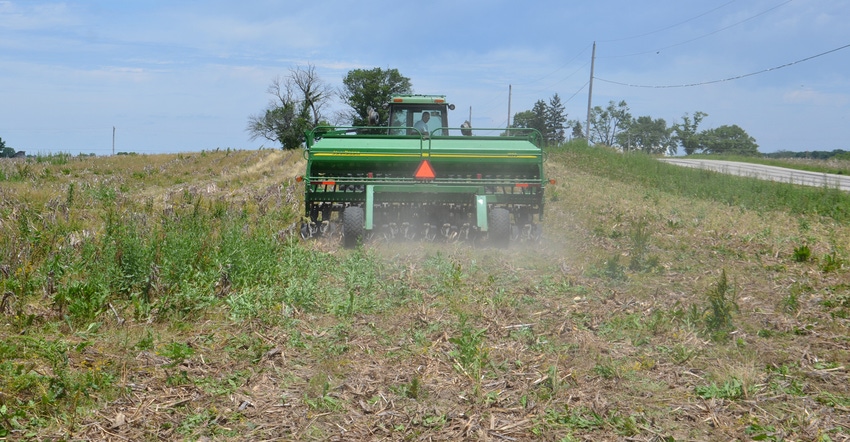July 1, 2019

Nobody should look a gift horse in the mouth. Without federally backed crop insurance, the Market Facilitation Program and disaster aid for farmers in the hard-hit Western U.S., 2019 would be an even more difficult year.
Crop insurance helps build a safety net through risk management and makes sense for a country that wants a cheap food policy. Those hit by unprecedented flooding and other calamities deserve help to get back on their feet. And it makes sense to provide help to farmers hurt by trade policies. Although tariffs might raise all boats eventually, they drydocked barges that would have carried Indiana and U.S. farm goods overseas.
Here’s the ‘but’ …
Government aid isn’t without cost — not in dollars and cents, but in extra stress and the inability to make timely, informed decisions. It’s sometimes at the cost of being able to do what’s best for your land at the right time.
We realize massive efforts like the Market Facilitation Program require tons of red tape to carry out. It’s hard to design a one-size-fits-all program for a diverse agriculture. Yet when farmers needed information to decide whether to take full prevented planting or go with partial prevented planting and plant beans so they would qualify for a future MFP payment, details were slow in coming.
From the day USDA Ag Secretary Sonny Perdue announced the MFP program in late May, USDA implied you must grow a crop to get payment. However, some felt that pushed people toward soybeans when there were already too many soybeans. Others were sure USDA would relent and let prevented planting acres qualify.
It wasn’t until some two weeks later that USDA finally noted its hands were tied. The law didn’t allow MFP payments unless a crop was planted.
Instead, USDA hinted at a “minimal” payment for prevented planting acres, but only if you planted an acceptable MFP program cover crop. The release promised details within a “few weeks.”
When your barn is on fire, you need the fire department now. For those staring at unplanted fields, they needed information right away to make decisions.
Right spirit
No doubt agriculture would be better off if it didn’t need government help, but when calamity strikes and weather takes historic turns, with so much money on the line to grow a crop, that may no longer be possible.
Perdue issued words of encouragement in that mid-June statement. He obviously “gets it.” It’s likely he just can’t turn the wheels of government as fast as he would like. Here’s his telling statement:
“I have been out in the country this spring and visited with many farmers. I know they’re discouraged, and many are facing difficult decisions about what to do this planting season or if they’ve got the capital to stay in business, but they shouldn’t wait for an announcement to make their decisions. I urge farmers to plant for the market and plant what works best on their farm, regardless of what type of assistance programs USDA is able to provide.”
Planting for the market when your banker is peering over your shoulder is easier said than done. Here’s hoping USDA can streamline its decision-making processes to get information out even faster in the future. First and foremost, here’s hoping that in 2020 and beyond, farmers can get back to growing for those markets and not farming with one eye constantly on government payments, out of necessity.
Comments? Email [email protected].
You May Also Like




